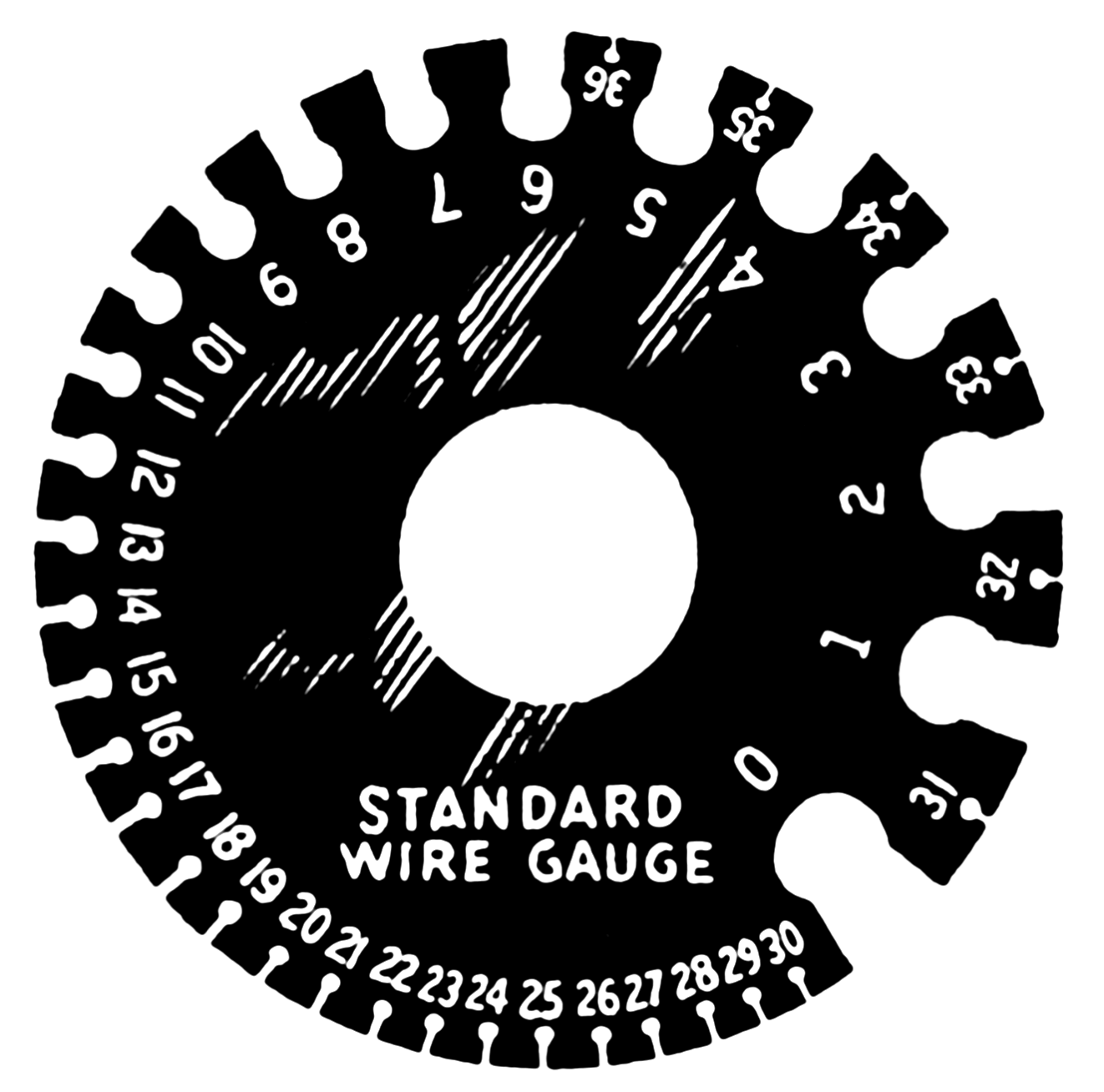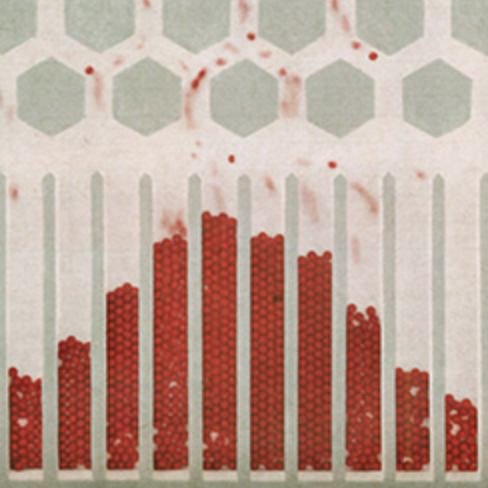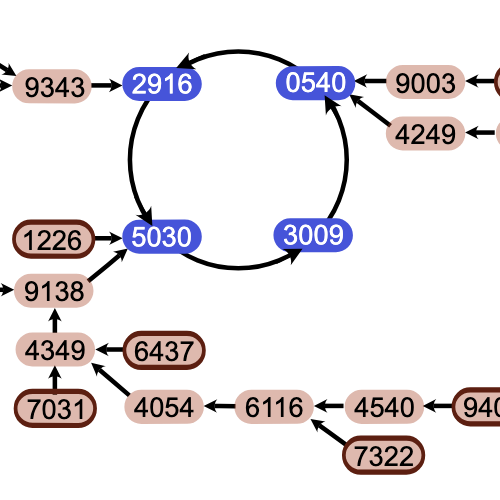The Demon in the Dryer
by Brian Hayes
Published 31 January 2007
Doing some laundry last night, I threw a duvet cover and nine pairs of socks into the dryer together. (Household hint: Don’t.) The duvet cover is a giant fabric pouch with a slit along one side; think of a queen-size pita pocket. Initially, all the socks were outside the pouch. When I pulled the load out of the dryer, all but three of the socks were inside the cover.
There’s nothing obvious about the geometry of this big, floppy bag that would suggest it has any special ability to capture socks. It’s not shaped like a fish trap with a funnel opening. In the random tumbling of the dryer, I would have thought that socks would move into or out of the opening with the same probability. But if that’s the case, then finding a 15–3 distribution is quite a fluke. There are 218 = 262,144 ways of arranging the socks in two groups, and only 5,220 of them have three or fewer socks in one of the groups. That’s less than 2 percent and a little beyond the 2σ level of unlikelihood. Does Maxwell’s sock demon live in my dryer?
Responses from readers:
Please note: The bit-player website is no longer equipped to accept and publish comments from readers, but the author is still eager to hear from you. Send comments, criticism, compliments, or corrections to brian@bit-player.org.
Publication history
First publication: 31 January 2007
Converted to Eleventy framework: 22 April 2025




The duvet cover acts like one of those Lobster traps. It is easier to get in than to come out.
What if you put two duvet covers? Is one of them suppose to eat the other?
Another nice observation!
It’s possible the socks tumble more freely when they’re outside the duvet cover than they do when they’re inside — i.e., they contact (and cling to) the duvet cover on just one side when they’re outside, but on both sides when they’re inside — so they move more easily in than out. Alternatively, perhaps the duvet cover billows while tumbling so that there’s more sock-occupying volume inside than out. The socks’ Brownian motion gives them an equal probability of being anywhere inside the dryer by the end of the cycle, but most of that volume is inside the duvet cover. What you’re seeing is the collapse of the wave packet….
Barry:
So next time I need to try this at the laundromat, where the dryers have a glass panel in the door, and I can watch the socks being consumed, and try to gauge the volume ratios.
Seb:
I wouldn’t dare to let two of those things spend much time together. They might join to form a nonorientable surface that would eat more than just socks.